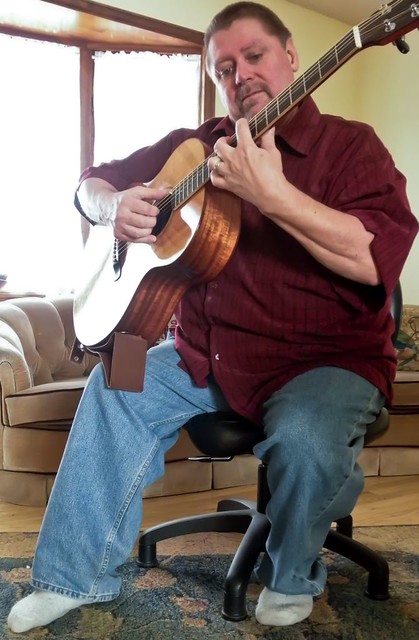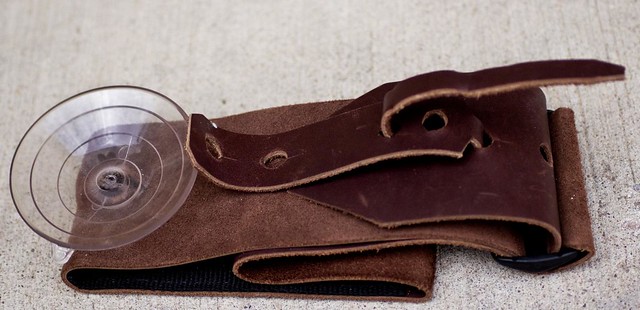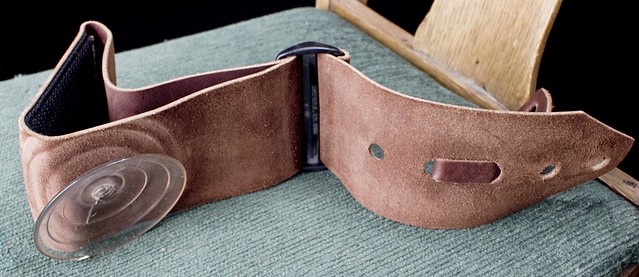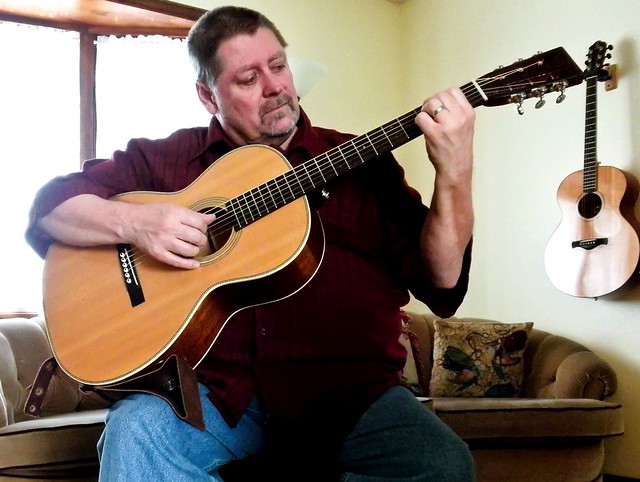
 |
|
#1
|
|||
|
|||
|
My guitar doesn't stay on its position without left hand.
I read left hand shouldn't hold the guitar so something is not right here. Is the right hand supposed to hold it in position while strumming? Should I get a foot stand or use strap to stick it in one position? What about left elbow? Should it be close or far away from the body? As for foot tapping, should it be for every down beat or every other down beat or once for whole 4 down beats? Thanks Last edited by Mystery123; 12-21-2015 at 02:22 PM. |
|
#2
|
|||
|
|||
|
Mystery,
You shouldn't really use either hand to hold the guitar in place. If you are sitting, you should use your legs, chest and upper arm to hold the guitar and use your hands for playing. If you are standing, use a strap. Either way, sitting or standing you should be able to take both hands completely off of the guitar and have it stay in place. As far as foot tapping is concerned, your foot should tap as a reaction to what you are playing, it should never be used to actually keep time.
__________________
Working with my head down, trying to keep the groove alive https://soundcloud.com/willie-johnson-jr |
|
#3
|
|||
|
|||
|
Quote:
One of my guitar playing friends suggested to tap foot as I have hard time switching chords while maintaining rhythm. Basically, tapping used as a metronome. |
|
#4
|
|||
|
|||
|
Tap your foot, or stomp it, or bang your head, or all of the above. It doesn't matter whether your fingers follow your foot or vice versa, if the result is a stronger steadier groove. Sometimes I think the more of your body is in synch with the music, the merrier.
__________________
Herb Proud owner of only one guitar --- https://soundcloud.com/bucc5207 "Science is the belief in the ignorance of experts." - Richard Feynman, 1966 |
|
#5
|
|||
|
|||
|
Posture! Most important.
Sitting "western style" :
Vital rule: If it hurts, stop and figure out why.
__________________
Silly Moustache, Just an old Limey acoustic guitarist, Dobrolist, mandolier and singer. I'm here to try to help and advise and I offer one to one lessons/meetings/mentoring via Zoom! |
|
#6
|
|||
|
|||
|
Thanks for comments.
Quote:
I was gripping the neck at an angle instead of perpendicular to fingers so my palm between thumb and index was touching the neck. Specially, in C, D chords, palm was touching the neck even more. So I tried not to touch/balance the neck with fretting hand. As soon as I leave my left hand, the guitar falls on its head so obviously my left hand was holding it. There is no way to balance the guitar on its own without holding/pressing it with one or the other hand. Try it and you'll see guitar on the floor. 
|
|
#7
|
||||
|
||||
|
Quote:
I use a lift called a NeckUp which is a small leather strap with suction cup which fits on the lower bout and holds the neck up (hence the name) and balances a guitar better on either knee. I use it on the right knee, and it is adjustable to any size guitar body and allows one to position the guitar so both hands are positioned at a good ergonomic angle, and out toward the knee opening up the back (which is supposed to resonate as well as the front). It allows not only better balance of the instrument, but best positioning left to right in front of the body. I've been using them for over a decade, and of all the lifts I tried, it's the best for me. And it folds up and goes under the headstock in my case when I go mobile. For me, it alleviates the strain from both shoulders, moves the fretting hand at least 2" closer to the body over the lap-drop position (a good thing), improves the fingering/hand angle, and eliminates the left hand from lifting.     Hope this adds to the discussion. |
|
#8
|
|||
|
|||
|
Thanks for comment Larry.
I'd like to get the position right without using anything at first. |
|
#9
|
||||
|
||||
|
Quote:
Great goal. I have readjusted my position three major times during the 52+ years I have played guitar, and after I turned 55 is when I finally went to a lift. This was also the time when I started playing more sitting than standing. All my live gigs, except for Worship Band, I play sitting. Hope you find the position which works for you. As you have already noted, guitars don't balance in the right position by themselves (not without help). Being aware of what you are doing is an important part of playing comfortably, and without the physical end of things impeding the playing end of it all. Have fun experimenting… |
|
#10
|
|||
|
|||
|
Quote:
 Keeping a beat while changing chords is a big challenge for all beginners (and relative beginners), but the trick is to keep the beat regardless. Just keep strumming in time, and when you need to change chord, take your fingers off the first chord in time to get to the next one on the right beat. It doesn't matter if you have to strum open strings while your fingers are moving - just get that next chord on the beat without slowing down. Actually, of course, it often does matter if you strum open strings - but often it doesn't; pros do it all the time, but usually only on the last 8th note. The point is you have a whole beat (after hitting the last chord on beat 4) to move your fingers, and if an upstroke catches open strings, no one will notice. If the beat is steady, the ear forgives a strange non-chord in between - especially if the key is C, G or D, or if it's a blues in E or A (because then the open strings are all in key, so none of them are wrong notes). If it takes you longer than one beat to change chords - then slow the tempo a little. But even if you do need more than one beat, just strum the open strings on beat 4 anyway while changing. Developing a sense of steady time is really important; the chord changing will speed up anyway, the more you practice. You should, of course, practice chord changing just on its own too, without any rhythm. Pick each pair of chords in a song, and move your fingers back and forth from shape to shape, repeatedly - you don't even need to strum, just get the fret hand moving firmly from shape to shape, over and over. The repetition is what helps - a workout for the hand. Then switch on the metronome and do it in time (any speed you like).
__________________
"There is a crack in everything. That's how the light gets in." - Leonard Cohen. |
|
#11
|
|||
|
|||
|
Quote:
Sillymoustache's advice is just right (even if his moustache isn't  ). If you find your right thigh is not horizontal - sloping down away from you (if the chair is too high) - you can rest your foot on something. The footstools classical players use (with guitar on left thigh) is about the right height, and will do (more or less) what Larry's Neckup will do. And of course you don't need a special device; anything you can rest your foot on will do, some old books, a dead cat, that sort of thing. ). If you find your right thigh is not horizontal - sloping down away from you (if the chair is too high) - you can rest your foot on something. The footstools classical players use (with guitar on left thigh) is about the right height, and will do (more or less) what Larry's Neckup will do. And of course you don't need a special device; anything you can rest your foot on will do, some old books, a dead cat, that sort of thing. Another option is to cross your legs, right over left. That both brings the guitar to a good height, and brings it more central - almost exactly the position in Larry's photo. (You often see jazz players in this position.) The disadvantage there is it can cut circulation in the leg if you hold the position too long! But mainly, don't let the neck drift forward or down. With guitar on right leg it doesn't need to be angled up much, but shouldn't be horizontal, and definitely shouldn't be pointing down or forward. As long as your fret arm elbow is 90 degrees or less, it should be fine (that's the critiical angle, not so much the guitar's position). Also, the more the neck is angled up, the more the guitar will balance! (Because more of the body will be on the right side of your leg) But as I say, if you keep your right arm on the guitar (as you normally do while playing), there's no way the neck can drop.
__________________
"There is a crack in everything. That's how the light gets in." - Leonard Cohen. |
|
#12
|
|||
|
|||
|
Quote:
Quote:
I find it depends on which foot I'm tapping with! If I cross my legs (see above), then it feels right for my right foot (not touching the floor) to tap on 2 and 4. But if I tap left foot instead (on the floor), it will be 1 and 3. (I never really thought about this, but it seems to be what I do...) But bear in mind that while foot tapping can help you feel rhythms, it's no substitute for a metronome. There's two issues about rhythm. One is just being able to keep a steady beat, without slowing or speeding up. Foot tapping is no help there (if you can't strum in time, what makes you think you can tap a foot in time? It's just one more appendage you have to control....) The second thing is about feeling your way into a groove, marking accents and syncopations and rhythmic patterns within the beat. This is where foot tapping can help, because it's a way of marking the main beats as a guide, a template within which (against which) you can vary your right arm moves. If you watch pro players, when they play a simple 4-beat strum pattern, they may not move much at all. The right arm is its own metronome. But as soon as they start playing something syncopated or funky, with missing beats or accents off the beat, they'll start moving their body more - it might not be a foot tapping, it might be head bobbing or shoulders moving: but some kind of displacement movement to mark the beat that they're still feeling.. So the marking of the beat has moved from their right arm to elsewhere in the body, so the embellishments to the beat can be focussed on the guitar. That's the role of foot tapping. But it won't help you if your problem is speeding up or slowing down, or just not holding a tempo steady. You need some external device (metronome, drum machine, backing track) to hold you steady - or rather to train your own sense of steady time. A metronome is ideal because it's so sparse - much harder to follow a groove than it is with a backing track. Our natural sense of time is flexible, depending on our mood. For music, we need to develop a more clockwork, metronomic time sense. Otherwise, we just don't know when we're speeding up or slowing down, because our internal clocks are not rigid. (If we play to a metronome, we can often feel that it's slowing down or speeding up, depending on what we're trying to play - that proves how faulty our natural time perception is.)
__________________
"There is a crack in everything. That's how the light gets in." - Leonard Cohen. |
|
#13
|
||||
|
||||
|
Quote:
Quote:
Quote:
Quote:
|
|
#14
|
|||
|
|||
|
Quote:
Watch this video and pay attention to how many times this guy takes both hands off of the guitar (around 1:01 or so) while it sits in his lap. You have to "hold" the guitar with your chest, leg and upper arm (around the bout), which allows you to take both hands off (not use them to hold the guitar.)
__________________
Working with my head down, trying to keep the groove alive https://soundcloud.com/willie-johnson-jr |
|
#15
|
|||||
|
|||||
|
Quote:
Quote:
Quote:
Thanks. BTW, how far away from the body should the guitar be. If too close, I have to move the elbow back. Quote:
Quote:
Looks like I'm not a beginner but completely noob. 
|